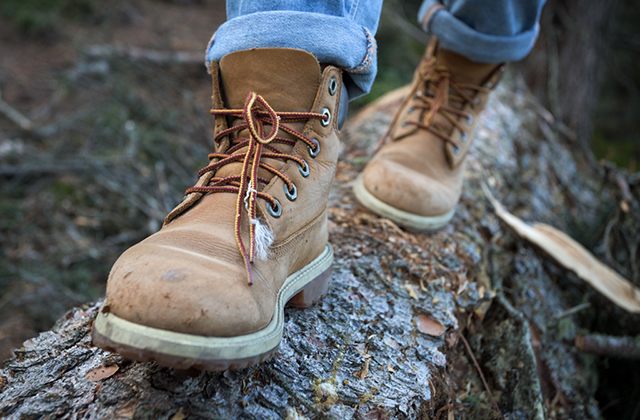Techniques to Pick the Best Hiking Boots
Why go to a lot of trouble selecting the best hiking boots? Because they are your Feet, yes your feet. If you are going hiking, that means countless steps. Probably the most important part of your body to keep strong during a hike will be your feet. In the event you cannot walk, you can’t get home.
Your boots are the foremost critical element which affects the enjoyment of hiking. For this reason you should pick the best hiking boots for your needs. If you have some boots which are not comfortable or are made for the improper outdoor adventure, it might spoil the entire trip.
Another thing to consider is the fact these boots are to last for a long while, so don’t just get a boot because it’s discounted. Try out the best set of boots to suit your needs. Don’t skimp on your hiking boots. You could regret it when it’s too late and you are a long way in your hike.
Selecting the most appropriate hiking boots for your feet can be confusing, however here’s some advice making it simple.
Your Hiking Boot Buying Process
Above all, you need to try on the boots. I know this sounds like a “duh” moment, still trying it on in a store and making sure their comfort is essential for an enjoyable hike. How can you tell if your boot is actually a perfect fit?
- Test boot styles in the afternoon. Your foot usually swells throughout the day.
- Bring your socks that you will be normally planning to use. Correct fit depends on having the actual socks.
- Put the boots on and lace them snugly (but do not over fasten them so much that you’re hurting your hands, that is much too tight). Stand and try and raise your heel. Your heel ought to rise a maximum of 1/8″. A lot of heel movement suggests too much friction.
- Tighten the laces plus locate a solid target to kick the toe of the boot into, like a post or ground. Kick the object twice. If you find the toes slam into the front of the boot, subsequently the boots are not fitting properly. On a steep downhill trek, the toes can get a beating plus it can cause difficulty with the toe nails or feet. The toes should push close to the front of the boot on the third or even 4th kick, but never slam. Various methods you can look at in case your toes are crushed could be to change socks, re-lace the boots or maybe test a different set of boots.
- A number of locations have a ramp you’ll be able to walk up and down on to help you determine if they are suitable. Utilize it. Trails are not flat, utilize the tools while in the store to recognize the best hiking boots for your feet.
- Assuming you have time (and you should have time for this particular decision) walk around the store. The additional time you can spend in the boots, the better you will know if they fit correctly.
- Before you buy your boots, make certain you may return them. Some stores are good with regards to enabling you to return them if you have only worn them inside and not had them for a lengthy period of time. Check the return procedure before you leave.
- After you have bought your boots, they have to be broken in. (Do not head directly out to a 10 mile trail with new boots!) Put on the boots around the house, take quick walks around your neighborhood. When they appear to fit well, you will be able to use them on a simple day hike. The objective is to get the boots to form to your feet.
Cash Keeping Suggestion: If you’re money-conscience then try the boots on in the store, pick one you truly want and then purchase that identical style on the web for a lot less.
Care and Cleaning
- Make sure that you align the tongue each and every time you put your boots on. This inhibits the tongue from sagging and developing wrinkles. Wrinkles in the tongue contribute to blisters and rubbing.
- Make sure you read the care of the boots. Treat them if necessary to make a water resistant seal. If they’re leather and they end up getting soaked, let them dry out slowly. Don’t set them in front of a fireplace, this can cause breaking of the leather. Open them up each night on the trail as well as after a hike to allow them to air. Also, before putting them away until the next hike, clean them based on the manufacturer’s recommendations. Get any grime off them to help prolong their life. This can be done using a bristle brush. Care for the leather with saddle soap, let them air dry and then put on a sealer or wax.
When Purchasing the Best Hiking Boots For You, Keep These Things in Mind:
Materials used:
- Leather: Stronger and water repellent. Heavier than synthetic. Generally intended for longer hikes having a full back pack.
- Synthetic: Lighter in weight weight than leather, unfortunately shows wear more.
- Waterproof materials: Several boots offer a waterproof membrane that’s attached to the inside of the boot. (such as Gore-Tex ®)
Hiking Style:
- Day Hikes having a couple of containers of drinking water in a fanny pack.
- Over Night Hikes with a small pack.
- Several Day Hikes with a 40 to 50 pound backpack.
Boot Cut:
- Low Cut: Good for more level terrain, shorter hikes. Not really a lot of ankle support.
- Mid Height: Additional ankle support, can be used for limited multi-day hikes using a lighter in weight pack.
- High Cut: Traditionally the most rugged and durable boot. Great for lengthy multi-day hikes with a heavy duty pack.
Day Hike / Low Cut Boots
A Low Cut Boot would be the best hiking boot for day hikes. These could be used on a day time hike with level ground. You would have a small-scale day pack or even a fanny pack with a couple bottles of drinking water. Also, the trail shouldn’t have a great deal of gravel, since it could get in between your sock and the boot. These kinds of boots can also be water proof and are made of synthetic or synthetic/leather blend.
Extended Day or even Shorter Multi-Day Hike / Mid Cut Boots
The best hiking boots for a longer hike would be the mid cut. Mid Cut is good for more challenging inclines and they’ve got more ankle support. The majority are water-proof and are available in synthetic or a synthetic/leather combination. They perform a somewhat better job of keeping out gravel and pebbles and will provide you with more stability on muddy trails. These boots have sufficient support for using a lighter, small backpack.
Mountaineering or Long Multi-Day Hike / High Cut Boots
High Cut Boots tend to be the best hiking boots for the serious hiker. They come in Leather or Leather/synthetic blend. They’re a very strong boot with a lot of ankle support designed to be worn using a weighty pack. They may also be used with crampons for snow. They are unquestionably designed for the most demanding terrain.
Additionally: It is great to have the Perfect Hiking Boots, but what happens when your laces break?
It’s important to have a spare pair of laces on the trail. The laces must be made for boots and not shoes. I would suggest a round instead of a flat style lace, these tend to last longer. The support that laces provide is very important to a comfortable hike.
Every hiking boot needs a good boot insole. Insoles do wear out with time. Make sure that your insole continues giving you the right padding.
Remember; protect your feet with the proper hiking boots. They will appreciate you by the end of the day.
I’m hoping that this report has been helpful in choosing the best hiking boots for you.
Get the best hiking checklist on the web for FREE. Go to Hiking Revealed.com to pick it up today.
If you enjoyed this article and want to keep up to date on hiking and backpacking, check out Hiking Revealed.com. This website is packed full of information on hiking equipment and trail reviews.
Remember to sign up and get your FREE Hiking Checklist today!
Article Source: https://EzineArticles.com/expert/Bryan_Ryce/277809
Article Source: http://EzineArticles.com/2217207

